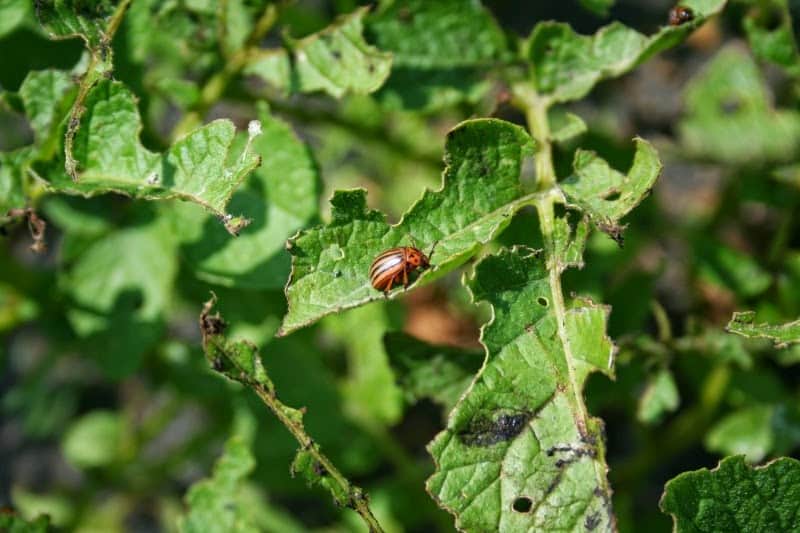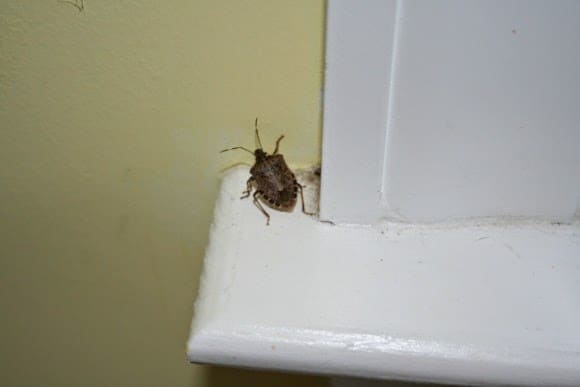Colorado potato beetles are native insects that can decimate your potato crop. They are common garden pests throughout the United States. Here’s some ideas for dealing with a Colorado potato beetle infestation.
Colorado Potato Beetle Infestation
Meet public enemy #1, at least around here this month…the Colorado potato beetle. The picture I took above doesn’t give you an idea of the full extent of the damage these awful pests have done to my potatoes. Not only do they infest potatoes, they’re working their way back in the garden towards the tomatoes. I’m afraid to plant my eggplant seedlings; they’re still in small pots on my front porch, well away from the infested areas, and last year my eggplants were eaten down to skeletons in one night.
Lifecycle of the Potato Beetle
An Organic Method to Control Potato Beetles
My uncle taught me this method on his upstate, New York farm. When I was six years old, he took me out into the corn field with an old coffee can filled with a mysterious liquid. He showed me how to tap the corn leaves so the Japanese beetles fell into the liquid. The same method works for the Colorado potato beetle.
Find an old jar, like a spaghetti sauce jar that’s empty, or an old coffee can. Squirt a tablespoon of dish washing liquid in the bottom. Fill a quarter of the container with hot water.
Walk around your plants and flick the adults and larvae into the water, where they drown. Place lid on the jar. Repeat daily.
Crop Rotation to Prevent Infestations
Organic Insecticides








[…] the Japanese beetle, the Colorado potato beetle isn’t an import into the United States. Rather, it was found almost exclusively in the West […]